#Herman Miller's textiles
Photo

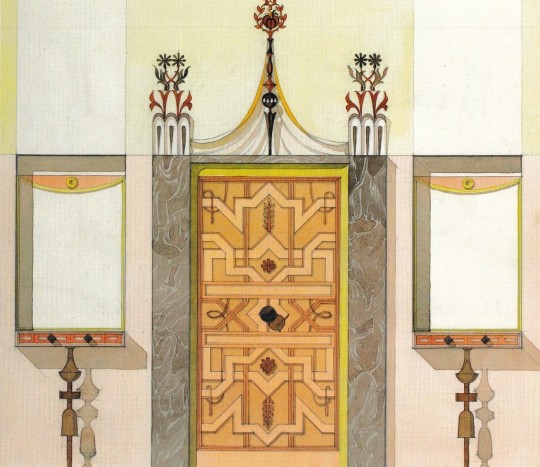


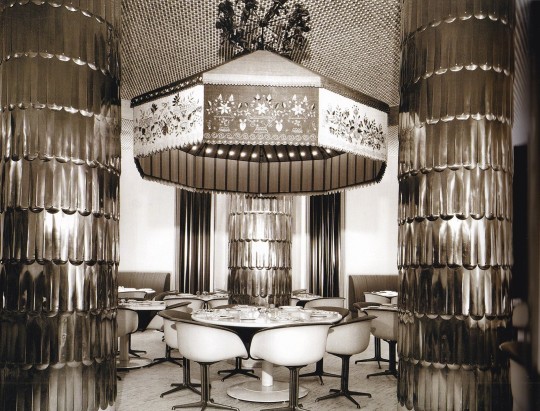




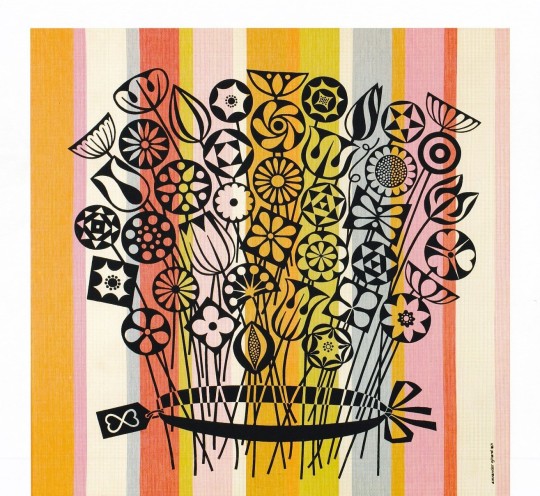
Alexander Girard
Todd Oldham & Kiera Coffee
Ammo Books, Los Angeles 2015, 672 pages, Hardcover, 29 x 5 x 22 cm, ISBN 9781623260729
euro 85,00
email if you want to buy :[email protected]
Renowned designer Todd Oldham and writer Kiera Coffee have created this massive monograph on seminal designer Alexander Girard as the ultimate tribute to this design icon.This 672-page book covers virtually every aspect of Girard’s distinctive career. As one of the most prolific and versatile mid-20th century designers, Girard’s work spanned many disciplines, including textile design, graphic design, typography, illustration, furniture design, interior design, product design, exhibit design, and architecture. Exhaustively researched and lovingly assembled by designer Todd Oldham, this tome is the definitive must-have book on Girard’s oeuvre.
Girard’s repertoire includes an incredible list of projects, including his bold, colorful, and iconic textile designs for Herman Miller (1952-1975), his typographic designs for La Fonda del Sol restaurant (1960), his celebrated retail store Textiles and Objects (1961), his own Girard Foundation (1962) that houses his extensive, personal collection of folk art from around the world, and his complete branding and environmental design for Braniff International Airways (1965). Girard’s work continues to inspire new generations of designers and admirers, and this beautiful book is the ultimate tribute to his legacy.
15/07/22
orders to: [email protected]
ordini a: [email protected]
twitter:@fashionbooksmi
instagram: fashionbooksmilano, designbooksmilano tumblr: fashionbooksmilano, designbooksmilano
#Alexander Girard#mid-20th century designer#textile designer#graphic designer#furniture designer#interior designer#exhibit designer#Todd Oldham#Herman Miller's textiles#typographic designs#fashionbooksmilano
13 notes
·
View notes
Text

Alexander Girard, Names, (linen), Herman Miller, Inc., Zeeland, MI, 1957 [MoMA, New York, NY]

#design#interior design#textile#typography#alexander girard#herman miller#moma#the museum of modern art#1950s
153 notes
·
View notes
Text

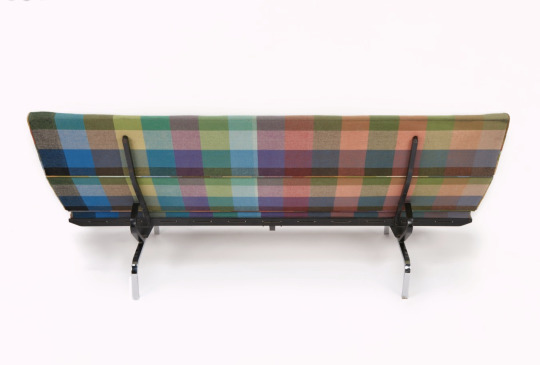
Sofa Compact by Charles and Ray Eames
Charles and Ray Eames, Sofa Compact, 1954, with Colorado Plaid textile designed by Alexander Girard. Chrome-plated steel, enameled steel, urethane, and upholstery; 34 ¾ × 71 ¾ × 32 ¼ in. Manufactured by Herman Miller, Zeeland, Michigan. Denver Art Museum: Gift of P.R.D. Roberts in memory of his mother, Marie Ponzi Roberts. © Eames Office LLC (eamesoffice.com). Photograph © Denver Art Museum. https://www.denverartmuseum.org/en/object/1995.43.
0 notes
Text
Home Decor Market Growth Leaders & Developments
Home Decor Market, by Product Type (Furniture, Home Textile, and Floor Covering), Distribution Channel (Supermarkets & Hypermarkets, Specialty Stores, E-commerce, and Others), Income Group (Lower-middle Income, Upper-middle Income, and Higher Income) and Geography (North America, Europe, Asia-Pacific, Middle East and Africa and South America)
As per Delvens' market home decor market growth analysis report, the global Home Decor market size is projected to reach USD 840 billion by 2026 at a CAGR of 4.3% from USD 630 billion in 2021 during the forecast period 2021-2028.
Home décor is all about styling the interior of a house. These may vary from person to person and also to the economic background of the owner but include all the aesthetic components like wall hangings, pictures, lamps, show pieces which would make the house look more appealing and visually attractive.
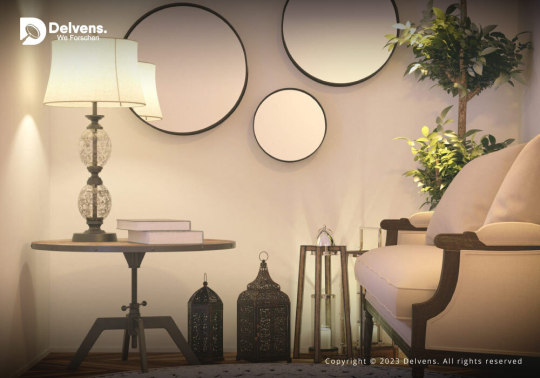
The global home decor market has grown significantly in recent years and is predicted to continue to develop gradually throughout the forecast period. This is due to the growing popularity of interior design items such as furniture, home textiles, and flooring among global customers.
To Understand Business Strategies, Request for a Sample Report at: https://www.delvens.com/get-free-sample/home-decor-market-trends-forecast-till-2028
With the expanding consumer base along with the recent trend of urbanization and consumer preferences for beautiful products to beautify houses, notably wooden floors and furniture, drive product demand. Furthermore, a preference for eco-friendly items that are less harmful to the environment has raised demand for unique home décor products made from various raw materials, hence boosting demand for home décor products throughout the projection period are some of the factors that have supported long-term expansion for Home Decor Market.
The rise of the real estate business is another reason driving the rapid growth of the home décor market. Home décor goods such as furniture, fabrics, and floor coverings that are utilised to improve the living area are increasing popularity.
Also Check Report on Construction & Demolition Waste Market
The unexpected COVID-19 epidemic has had an impact on people and companies all across the world. The US government has taken many precautionary measures to prevent the virus from spreading, resulting in partial lockdowns and the closure of physical retail outlets for an extended period of time. However, when individuals had more time at home, the majority of them began to remodel their homes, resulting in increased market income. Because of expanding consumer interest, the country's demand for do-it-yourself (DIY) furniture and other home design goods is increasing.
Regional Analysis
North America is expected to be the largest market during the forecast period. The advanced evolved retail structure along with the recent adoption of home decor products and the consumer expenditure on the same have led to growth in the home decor in the region.
During the forecast period, it is expected that European Home Decor market will register a growth of 4.2% CAGR.
To Grow Your Business Revenue, Make an Inquiry Before Buying at: https://www.delvens.com/Inquire-before-buying/home-decor-market-trends-forecast-till-2028
Competitive Landscape
Key Players
Inter IKEA Systems BV
Forbo International SA
Armstrong World Industries, Inc.
Mannington Mills Inc.
Mohawk Industries Inc.
Shaw Industries Group, Inc.
Herman Miller Inc.
Ashley Furniture Industries Ltd.
Kimball International
Duresta Upholstery Ltd.
Recent Developments
Ingka Centres, part of the Ingka Group, (which also includes IKEA Retail and Ingka Investments), has today taken its first step to expand into India with a major land acquisition in India.
Thibaut, a fabric, wallcoverings, and furniture business located in New Jersey, has purchased Italian textile manufacturer Coraggio in a transaction that finalised on July 13.
In an interview with CNBC, Nebraska Furniture Mart chairman, Irv Blumkin, says there has been a slight shift in demand amid inflation.
Reasons to Acquire
Increase your understanding of the market for identifying the best and suitable strategies and decisions on the basis of sales or revenue fluctuations in terms of volume and value, distribution chain analysis, market trends and factors
Gain authentic and granular data access for Home Decor market so as to understand the trends and the factors involved behind changing market situations
Qualitative and quantitative data utilization to discover arrays of future growth from the market trends of leaders to market visionaries and then recognize the significant areas to compete in the future
In-depth analysis of the changing trends of the market by visualizing the historic and forecast year growth patterns
Purchase the Research Report: https://www.delvens.com/checkout/home-decor-market-trends-forecast-till-2028
Report Scope
Home Decor Market is segmented into Distribution Channel, Income Group, Product Type, and Geography.
On the basis of Distribution Channel
Supermarkets and Hypermarkets
Specialty Stores
E-commerce
Others
On the basis of Income Group
Lower-middle income
Upper-middle income
Higher income
On the basis of Product Type
Home textile
Rugs textiles
Bath Textiles
Bed Textiles
Kitchen & Dining Textiles
Living Room Textiles
Floor covering
Tiles
Wood & Laminate
Vinyl & Rubber
Carpets & Rugs
Others
Furniture
Kitchen
Living and Bedroom
Bathroom
Outdoor
Lighting
On the basis of Region
Asia Pacific
North America
Europe
South America
Middle East & Africa
About Us:
Delvens is a strategic advisory and consulting company headquartered in New Delhi, India. The company holds expertise in providing syndicated research reports, customized research reports and consulting services. Delvens qualitative and quantitative data is highly utilized by each level from niche to major markets, serving more than 1K prominent companies by assuring to provide the information on country, regional and global business environment. We have a database for more than 45 industries in more than 115+ major countries globally.
Delvens database assists the clients by providing in-depth information in crucial business decisions. Delvens offers significant facts and figures across various industries namely Healthcare, IT & Telecom, Chemicals & Materials, Semiconductor & Electronics, Energy, Pharmaceutical, Consumer Goods & Services, Food & Beverages. Our company provides an exhaustive and comprehensive understanding of the business environment.
Contact Us:
UNIT NO. 2126, TOWER B,
21ST FLOOR ALPHATHUM
SECTOR 90 NOIDA 201305, IN
+44-20-8638-5055
The Home Decor Market report answers a number of crucial questions, including:
Which companies dominate the Home Decor Market?
What current trends will influence the market over the next few years?
What are the market's opportunities, obstacles, and driving forces?
What predictions for the future can help with strategic decision-making?
What advantages does market research offer businesses?
Which particular market segments should industry players focus on in order to take advantage of the most recent technical advancements?
What is the anticipated growth rate for the market economy globally?
0 notes
Text
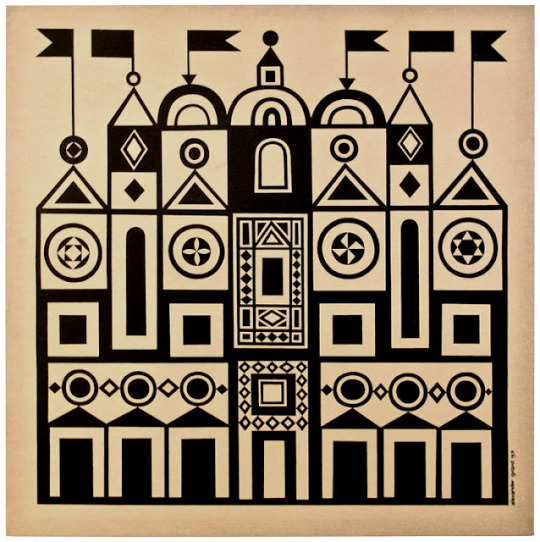
Palace wallhanging by Alexander Girard for Herman Miller, 1971.
#alexander girard#textile design#midcentury#mod#aesthetic functionalism#functionalism#american design#herman miller
55 notes
·
View notes
Photo

'International Heart'
Textile design by Alexander Girard for Herman Miller, c. 1967
289 notes
·
View notes
Photo
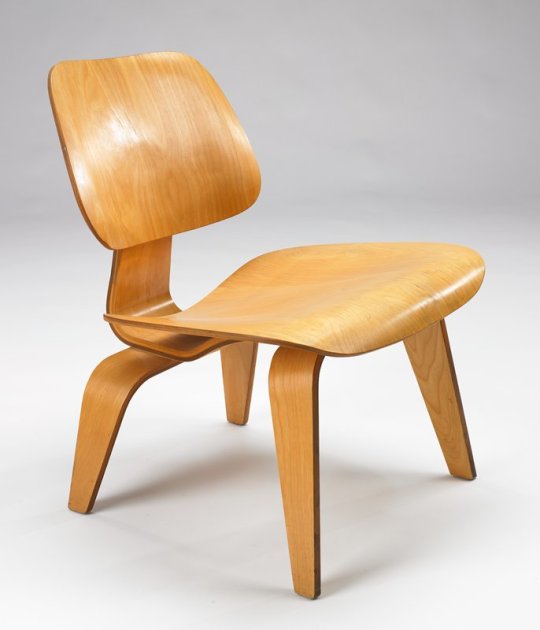
"LCW" chair (Lounge Chair Wood), Charles Eames, c. 1950–1955, Minneapolis Institute of Art: Decorative Arts, Textiles and Sculpture
Lounge Chair, molded birch plywood Charles and Ray Eames conducted numerous experiments in molded plywood techniques in the early 1940s, further refining the furniture designs Charles and Eero Saarinen designed for MoMA's "Organic Design in Home Furnishings" competition. Early chairs, and the splint shown in this gallery, were produced by the Molded Plywood Division of Evans Products Company, a Detroit firm. Charles Eames, who headed the subsidiary in Venice, California, pitched the partnership on the promise to find new ways to utilize Evans' ownership of numerous Douglas fir forests in the Pacific Northwest. By 1949, the Herman Miller Furniture Company of Zeeland, Michigan, which had been marketing and distributing the Eames's designs since 1946, took over production. The lounge chair, perhaps the most sculptural of all the Eames's plywood chair variations, is constructed of five elements molded and bent by heat and pressure. The ergonomic seat and back are set at an angle to follow the contours of the body, and are joined to the tapering supports by shock-mounts made of black rubber. These absorbers add another degree of flexibility to the natural spring of the chair.
Size: 27 1/4 x 21 7/8 x 25 1/4 in. (69.22 x 55.56 x 64.14 cm)
Medium: Molded plywood and rubber
https://collections.artsmia.org/art/3551/
3 notes
·
View notes
Text
the things that led me to that area of work (home economics and international development) were a combination, i think, of these things:
my foundations courses in history at MSU were taken in african history, so i learned immediately about the university’s entanglements in nigeria (as they are the reason that msu has the best program in african history in the united states), but i cannot for the life of me remember where i originally discovered the work msu did in nigeria specifically in home economics. my research paper that first year was related to cash crop ag and labor in east africa, it’s possible that i encountered something then. years later, when i was taking african art history courses, i learned about a woman who collected textiles and art that formed the foundation of the university’s african art collection, and discovered that she was a home economics professor. her husband was a rural sociologist and extension professional who directed the program in nigeria for a time. their names are all over not only the african collections at the library and museum, but development programs that still stand at msu (we love development, especially in gender studies, unfortunately.) as i added a women’s studies minor later in my undergrad career, i saw resonances in these development programs from what i had learned about msu’s history in africa--and the same actors, a lot of times. my reservations about the creepiness of msu’s gender and development focus lead me to look into their history, and figure out the connections between institutional women’s studies and its twin antecedents in women’s education and international development. i never really elaborated this bit, and i can’t remember if any historians have written at length about it, but i think that a history of women’s studies programs at big land grant extension universities of the USAID era can tell us a different story about institutional feminism than the one we already know well about the politics of those programs in, say, california. (not that those weren’t also USAID programs, LOL.)
my foundational understanding of the history of home economics was kind of unsurprising. some of the major figures adjacent to home ec movements are central in the teaching of u.s history--for example, i learned about catherine beecher in high school, then more in depth in a college us history survey, in passing in women’s studies introductory courses, and she was also part of high school history curricula i participated in teaching when i was doing field placements. it’s very hard not to know about domesticity politics if you study us history! (which is why a lot of my man peers embarrass themselves tbh)
you recall my old interests in craft politics--they are there, still, i guess, but they look different. i don’t find a lot of that shit very compelling. that intersected with my interest in interiors--back then, kitchens in particular. i credit the year i spent in the victorian house with developing my interest in kitchens, lol! mary anne beecher’s work on extension kitchens changed the whole thing for me, many of you will remember. don’t even remember how i found it, probably cited somewhere. this conference paper is top five formative texts for me. you can easily see my interests coming together there: i was concurrently taking a class in modern architecture that heavily emphasized in interior design and a class on modernization theory (see #5). i was looking for a way to talk about the spatial politics of, basically, interiors. homes, houses. my work on home economics ended up being largely about consumer education and nutrition--the bread and butter of home ec, especially in development--do you remember me bitching nonstop about how i did NOT care that much about food history?--but thinking about interiors got to the heart of the scale, anyway. anybody who knows me knows that is still the thing that drives my thinking! i had not understood myself as an urban historian or a political historian (that would come very late tbh, and was an extreme revelation to me lolol), which are the two main things that i am, but scaling home economics from the kitchen to the nation to the globe taught me how to do both. because, as i see it, urban history is a discipline of spatial scaling, and political history is the history of scaling the [power or influence of] the state. studying the university instead of a government made me be less afraid to study the state. (also margot canaday, who invented the state!!) (queen of states)
somewhere in here, taking a class on sixties universities and “development” while taking a class on basically herman miller, i discovered that msu’s interior design program, in the college of home ec--with close ties to modernist furniture producers in the state--had taken great society money to do research on domestic space in public housing. this fact, presented to me now, is practically mundane. but when i first discovered it--in the archives!--it intellectually FUCKED ME UP.
(worth noting that i was disciplining my interest in dow--a lifelong obsession already--at the same time. this is when i fell into alden dow, who figured heavily into my architecture ed, because it was taught by an architecture historian who works closely with michigan modernist preservation and publishes on it. i discovered at that time--again, no surprise to me now--that the home economics department received hell of grant money from dow chemical.)
my paper on msu’s home economics work in nigeria started in a class taught by the professor behind msu’s vietnam project, which was the best (and best taught) class i took as an undergrad. i wasn’t even planning to take it! it made me a political historian and motivated me not to abandon the discipline of history (i was planning to!).
11 notes
·
View notes
Text
Making & Gathering: K Studio
When we first came across K Studio’s work, we were immediately charmed. It’s impossible not to be—hand-drawn shapes, animals, and faces, all a little askew, perfectly translated through embroidery onto linens. They’re sweet, evocative, and delightful.
It’s rare for home goods to elicit such joy, so we were curious to know more about the designer and the story behind our new favorite textile line. Founder and designer Shelly Klein, together with her mother Mary, runs the studio out of Grand Rapids. Shelley took some time to shed some light on K Studio for us.
How did you get started? What are your backgrounds?
I have a BFA in painting, and continue to create paintings and drawings as part of the creative process for K Studio. After graduating from college, I began taking on sewing projects to make extra money. Through my custom
sewing work, I got connected with Herman Miller, which is headquartered
just down the road from Grand Rapids, and began to work on custom showroom accessories and installations. It was through this work that I began
experimenting with embroidery, and I really fell in love with it as a medium. I found that a stitched line fit in perfectly with the imagery and visual sensibility of the fine art I was making in my painting studio.
When I began to think about the possibilities of scale that could be achieved through creating embroidered works of art, it wasn’t long before I convinced my mother, Mary Klein, to join me and form K Studio. Mary spent most of her career in the contract furniture industry with a background in management and manufacturing. She provides the necessary business expertise to run K Studio efficiently allowing me to focus on design and marketing. It’s a perfect business partnership.
How do you embroider your designs on fabric?
Our product line consists mainly of textile items, all of which are designed and manufactured in our studio in Grand Rapids, MI. We run a commercial embroidery system similar to what would be used to embroider a company logo on a baseball hat or polo shirt. I create digital patterns for each product and we run them one at a time. It’s not new technology, but we are using it in a new way. It’s a medium that offers enormous flexibility and unlimited potential as a means to create artful items that reflect the care and craft of handwork, but can reach a much larger audience.
image
What are your influences?
I’m influenced by art and artists, travel, fashion, graphic design… the usual stuff. Lately, I find myself drawn to images that evoke a reaction from my children. My husband and I have three-year-old twins whom I spend a lot of time with… I’m certain they have influenced my work in ways I don’t even realize.
Tell us a little about the materials you use.
The products that Heath has selected use our flax material. It is not certified organic but we certainly look at sustainability when seeking out suppliers for all of our products.
Flax is a natural product that does not require irrigation during growth, and needs little or no chemical treatment. All parts of the plant are used, so there is no waste. Linen fabric is 100% biodegradable and recyclable. The environmental impact of spinning and weaving flax is virtually zero. The natural flax uses no dyes and only non toxic dyes are used for textiles that are colored. -Donna
0 notes
Text
CreditSights, 2 Park Avenue, New York City
CreditSights 2 Park Avenue, New York City, NYC Office Interior Photos, US Financial Research Firm
CreditSights at 2 Park Avenue, New York City
Sep 27, 2021
Location: Manhattan, New York City, NY, USA
Design: Kostow Greenwood Architects
The overall design provides multiple break-out spaces for collaborative and individual work. An expansive, south facing café encourages casual interaction or becomes another individual workspace in natural sunlight:
Photos by Adrian Wilson
CreditSights, 2 Park Avenue, New York City News
CreditSights
Location
2 Park Avenue. New York City
Size
23,500 square feet
Architect / Interiors: Kostow Greenwood Architects
A glass wall with large sliding doors allows the Conference Lounge with sofas to become an extension of the Conference Wing with meeting table and chairs or create two distinctive areas for groups to meet:
Client Background
CreditSights is a leading independent financial research firm with a mission to provide value added input that helps their clients make prudent and profitable investment and risk management decisions consistent with their risk profiles. Founded by a group of analysts, the firm has grown from 8 original employees to over 130 employees around the world. CreditSights is purely a research firm and does not underwrite securities or manage assets.
The 3Form LightArt Echo Fixture is a notable design element with two important functions – providing light and acoustic rating similar to a suspended acoustical ceiling without reducing the ceiling height:
Design Opportunity for a new Workplace
CreditSights’ previous office occupied two separate floors. The planned relocation would allow the entire team to be on the same floor and in the same open office area.
• The new office at 2 Park Avenue, a building with a landmarked exterior, was a blank canvas presenting an opportunity, for the first time, for the firm to design an office environment suitable to the team’s work styles.
• In consultation with Kostow Greenwood Architects, the desired workplace plan would have fewer perimeter offices, more open collaborative workspaces and several breakout rooms.
• One location for the New York based team was also an opportunity to infuse subtle design elements in the design of the workspace to enhance the firm’s brand presentation.
The open plan office, sit-to-stand desks, promote easier collaboration between teams and healthier daily physical activity. Adjacent workrooms, with digital room schedulers, are an alternative enclosed workspace for one to four employees:
Design Challenges
Low beam heights and high windows presented issues in running mechanical systems, lighting and sprinklers without obstructing the abundant natural light.
The windows in this landmarked building reach very near the ceiling so a lighting/acoustic solution was needed that would not obstruct the natural light.
The building did not permit electrical and data core drills therefore the design attempts to use as much of the existing floor power trenches with minimal additional trenches.
Conceive of a workspace that will foster community while supporting individual work for a team that has never before shared one work location.
Reception connects the two wings: West – open plan office and East – conference rooms:
Design Solutions
Programming a single floor layout
• The single floor layout for the firm’s new location is a typical middle core of public restrooms and elevators so Kostow Greenwood programmed the space into separate wings.
o The West wing is the widest and accommodates the main open workspace; the north perimeter offices; break-out/workrooms and an internal office conference room.
o The Northeast wing accommodates the client conference center which is composed of 1 small, 2 medium and 1 large conference room which is adjacent to an open plan lounge that can expand the footprint of the large conference room or be another meeting space
o East wing: IT department open office; storage; dedicated conference room.
o South wing: Café & Lounge
Use the open ceiling to maintain the highest ceiling heights
• The space came with pre-built slab and beam gypsum enclosures. The contractor carefully opened up areas to run power and data to avoid exposed conduit.
• Coordinate the ceiling plan to have the least obtrusive duct runs and sprinkler layout below the finished ceiling.
• Selecting a 2-in-1 light/acoustic fixture prevents having to obstruct the windows and the natural light.
The east conference wing contains four conference rooms that can accommodate from 6 to 12 people around tables with additional side seating. A separate Flash Studio with acoustical separation, green screen backdrop, and recording equipment facilitates more varied vlogs for their clients’ needs:
Distinctive wall treatments
• Each break-out room features a decorative wall covering showcasing nature:
o Designtex – Leafery
o Knoll – Run in leaf
o Numerart – Birch top trees
Distinctive lighting & acoustic solution
• The 3Form LightArt Echo fixture is a notable design element with two important functions – provide light and acoustic rating similar to a suspended acoustical ceiling without reducing the ceiling height.
• Ceiling lights embedded in the suspended grid of the ceiling tiles reduces noise transmission and provide more accessibility to ceiling plenum.
o JLC_Tech llc – T-BAR LED
• Decorative fixtures in reception area and hallway introducing a play of color
o 3Form LightArt – Slim Beams
The conference room adjacent to the café has white board paint walls to facilitate team brainstorming:
Distinctive selection of fabrics
• Workstations – Herman Miller: Renew Link Benching
• Conference room
o Tables – Geiger, Finish: Chocolate Ash, matte sheen
o Chairs – Vitra ID Trim Chair, Fabric: Plano 69 Light Gray
o Side seating – Coalesse Together Bench, Maharam Brindle – Pharaoh
• Conference Lounge
o Sofas – Bernhardt Mirador, Fabric: Maharam Taper – Sunset
o Poufs – Source Seating Mello Grade C, Fabrics: Momentum Textiles Marathon Noir & Rain, Millenium: Amber
o Table – Naughtone trace rectangle coffee table
• Café
o Tables – Falcon 800 Series Table
o Chairs – Herman Miller: Eames Molded Plastic: variety of colors Pale yellow, Red Orange, Aqua Sky, Peacock Blue
o Bench – Coalesse Together Bench, Maharam Brindle – Watercolor
• Reception
o Table – Naughtone trace rectangle coffee table
o Chairs – Coalesse Viccarbe Columbi Chair with wenge wood armrest, fabric: leather color 116
Open Office with workrooms
• To balance the reduction of private offices, the layout focuses on providing easy access to small workrooms that can accommodate 2-5 people.
o This allows the firm to have the open collaborative work environment between the research and sales departments, who had been on separate floors, while still providing the ability for private meetings and phone calls in the work rooms.
o These spaces can also be used as private offices if someone needs to break away from the open office for a day or a guest office for visiting colleagues.
Incorporating Technology
• Broadcast Studio
• Technology room schedulers at each work room and conference room allows the team to easily schedule a room from their desk or at the door.
Café & Lounge
• CreditSights wanted to provide plenty of seating area along the southern windows to entice employees to take breaks away from their desk for lunch and snacks along with providing an informal gathering area for the team.
• Open metal upper shelving with live plants in front of a glass panel permits southern sunlight into the entire office while still providing a sound barrier between café and open office.
Additional Details
• Open collaborative workspace with height adjustable desks
• Ergonomic chairs
• Multiple sized workrooms which feature decorative wall and one writeable surface wall with acoustically sealed ceilings and walls for privacy
• Broadcast Studio
• Phone/Conversation booths
• Wellness room with sink and mini-fridge
• Additional staff restroom and single occupancy ADA accessible client restroom
• Open café / lounge and pantry (fridge, dishwashers, sink, microwaves, ice dispenser, seltzer/water dispenser, coffee)
• Conference / IT area drink station (fridge, dishwasher, sink, seltzer/water dispenser, coffee)
• Multiple sized conference rooms & open conference lounge
The design for the café introduces natural wood and plants with industrial hardware shelves. A low-tiled wall topped with a glass divider separates the open plan office with the café. The glass divider permits light into the open office while providing a noise barrier:
CreditSights New York City Offices – Building Information
Design Team
Architect / Interiors: Kostow Greenwood Architects
MEP/FP Engineer: AMA Consulting Engineers, PC
Acoustician: Longman Lindsey
Expeditor: Burnham Nationwide, Inc.
Audio / Visual Systems: Spectra Audio Design Group
Plant Design: John Mini
IT Consultants: Shen Milsom & Wilke, LLC
Security: PTS Consulting, Inc.
Signage/Privacy Film: Coyle & Company Graphics, Inc.
Project Team
Project Manager: Gardiner & Theobald
Contractor: Vanguard Construction & Development
Furniture Dealer: WB Wood
Demountable System: Lane Office
Photography: Adrian Wilson
CreditSights, 2 Park Avenue, New York City, NY images / information 270921 from Kostow Greenwood Architects
Location: 2 Park Avenue, New York City, USA
New York City Architecture
Contemporary New York Buildings
Manhattan Architecture Designs – chronological list
New York City Architecture Tours by e-architect
New York Architecture News
130 William, Lower Manhattan
Design: Adjaye Associates
image : Binyan
130 William Manhattan Skyscraper Building
262 Fifth Avenue Building, Nomad
Design: Meganom Architects
image courtesy of architects
262 Fifth Avenue New York City
New York Architects Offices
Rockefeller Center New York
Guggenheim New York
Comments / photos for the CreditSights, 2 Park Avenue, New York City Architecture page welcome
The post CreditSights, 2 Park Avenue, New York City appeared first on e-architect.
0 notes
Photo
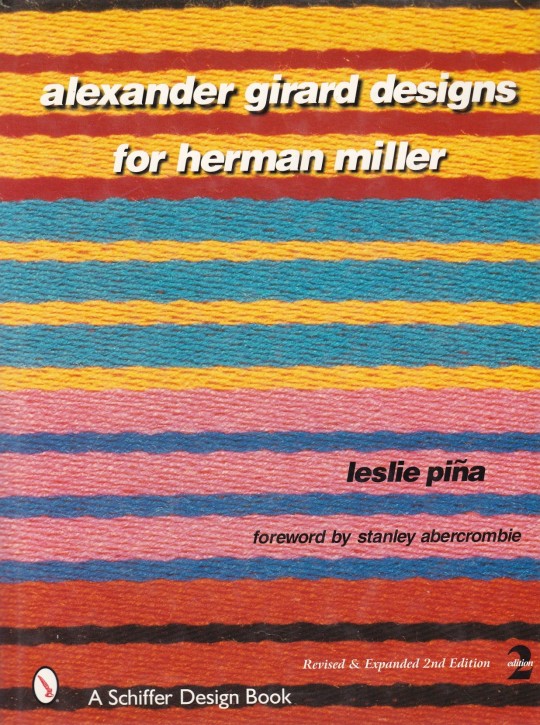
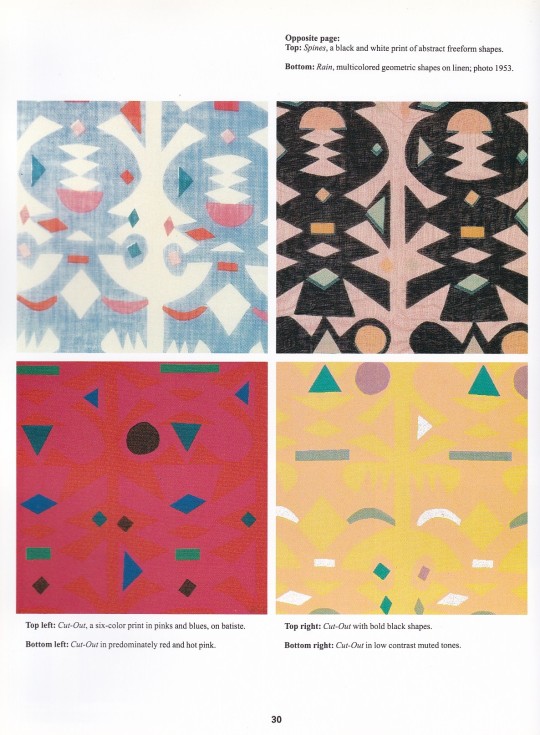

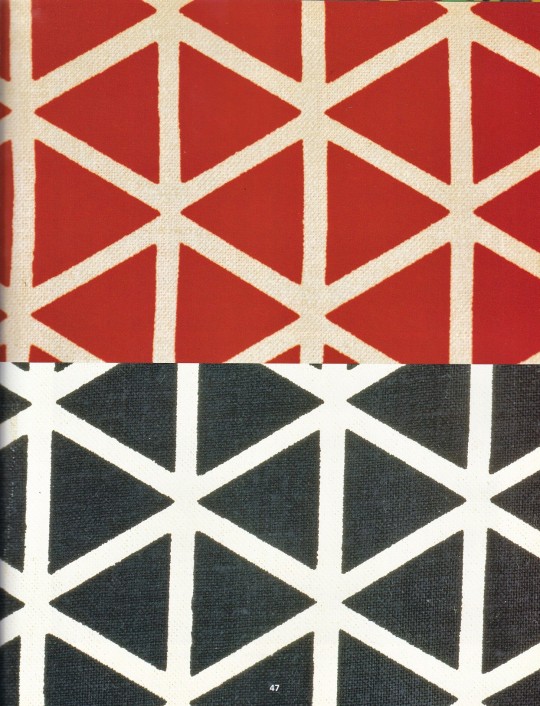

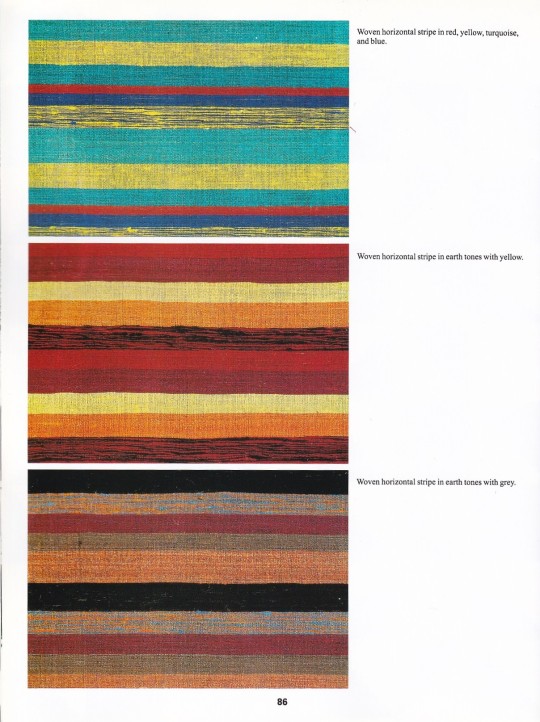

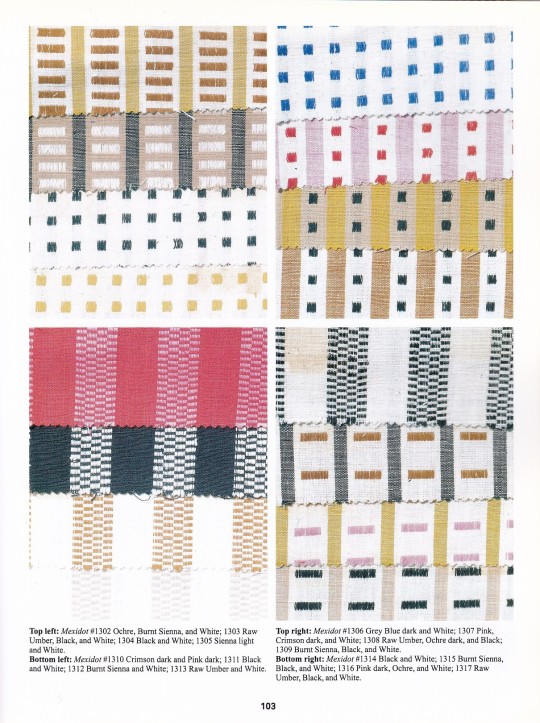
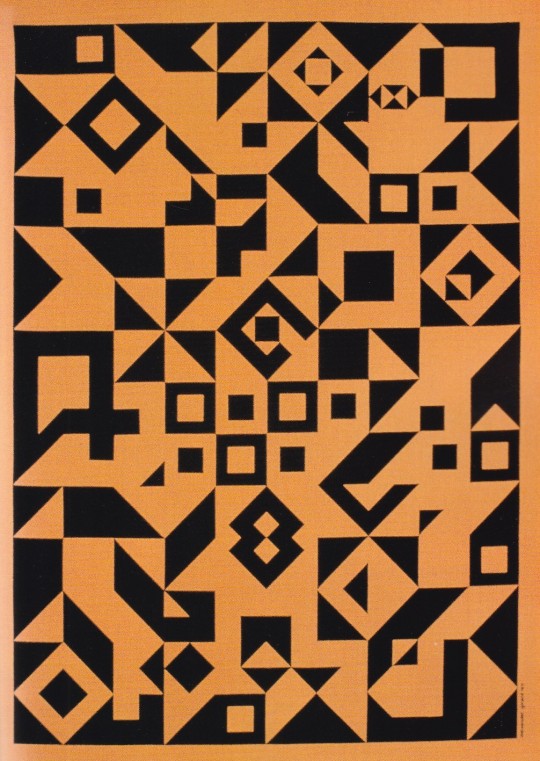

Alexander Girard Designs for Herman Miller
Leslie Piña
foreword by Stanley Abercrombie
A Schiffer Design Book, Atglen 2002, Revised and Expanded 2nd Edition, 191 pages, 22,25x28,55cm., 408 color & b/w photos, ISBN 978-0764315794
euro 65,00 *
email if you want to buy [email protected]
Among the great designers at Herman Miller in the 1950s and 1960s, Alexander Girard enhanced Eames' and Nelson's furniture with innovative textiles. As head of Herman Miller's Textile Division since it was formed in 1952, he designed some of the most colorful and exciting fabrics available anywhere. He also designed the 25-piece Girard Group of modern furniture, and the 40-item series of Environmental Enrichment Panels for Action Office 2. Girard's unmatched folk art collection adorned Herman Miller buildings, filled their Textiles & Objects Shop in New York, and over 100,000 items made up the famous Girard Foundation. His acclaimed work as an interior designer and architect and his remarkable textiles for Herman Miller make Girard one of the legendary designers of the twentieth century. With over 400 mostly color photographs of his textile and wallpaper designs, all of the EE panels and furniture, plus detailed text, timeline, and an updated value guide, this book is a comprehensive view of Girard's work at Herman Miller, and a must for anyone interested in mid-century design of textiles, interiors, or graphics.
08/12/21
orders to: [email protected]
ordini a: [email protected]
twitter: @fashionbooksmi
instagram: fashionbooksmilano, designbooksmilano tumblr: fashionbooksmilano, designbooksmilano
#Alexander Girard#herman miller#textiles#interiors#floral graphics#colorful fabrics#wallpaper designs#textiles books#fashion books#fashionbooksmilano
25 notes
·
View notes
Text

Small Squares (Furnishing Fabric), (silk, plain weave; screen printed), Designed by Alexander Girard, Produced by Herman Miller, Inc., Zeeland, MI, 1953 [The Art Institute of Chicago, IL]
#design#interior design#textile#geometry#pattern#alexander girard#herman miller#the art institute of chicago#1950s
112 notes
·
View notes
Note
Hi, my name is Anna and my favorite artists are Barbara Kruger and Jen Bartel. Right now I'm really interested in maximalism and filling my personal space with art, colors, and patterns that make me happy. What's your preferred interior design aesthetic?
Thanks for your message, That’s a really interesting question! I love interior design, I think the most important thing is natural light. I like white/light rooms filled with sunlight, plants, and beautiful floors. It makes such a huge difference. Our design aesthetic leans toward mid-century modern. My wife works for a mid-century design company, herman miller, so we have a lot of beautiful pieces that we’ve collected.
We have a lot of different styles that we like to switch out and add to our spaces. We’ve got bright colorful Mexican wooden animal carvings, and textiles, Minimal grapic Matise inspired pieces. A lot of Alexander Girard posters. I love pieces with texture, like woven cotton blankets, velvet pillows, unique baskets, ceramic pieces we love, and my wife makes macrame, and tapestries so we have a few of those out. But everything in moderation, and not all at once, otherwise it becomes lost and isn’t as special in the space, but not so minimal that it is cold. Actually my personal blog @nikkilanecreates has a lot of photos of interiors I love.
18 notes
·
View notes
Photo

#Artwork @girardstudio ・・・ Crop of the collage created as a blueprint for the Herman Miller New York Showroom in the 1970’s #alexandergirard #graphicdesign #pattern #design #textiledesign #textile
4 notes
·
View notes
Photo
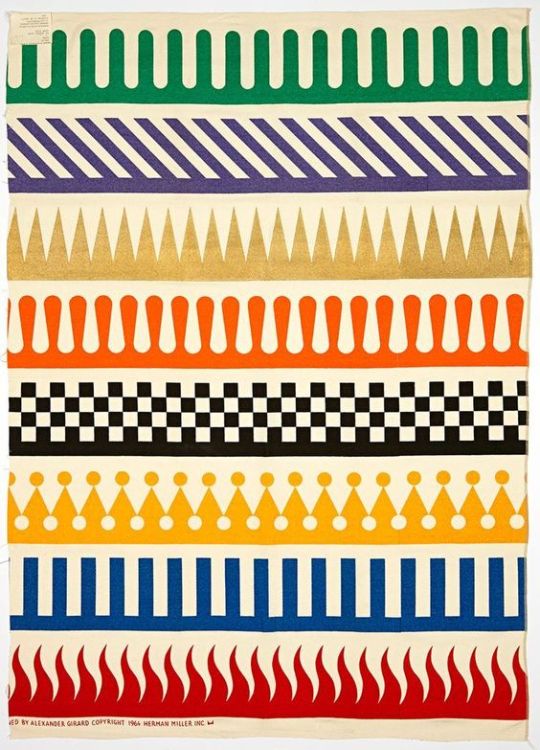
Alexander Girard for Herman Miller, 1964
330 notes
·
View notes
Text
Which new trends are likely to be seen in Home Décor Market ?
Home décor is a way that a house or apartment is decorated with various furnishings and accessories that make it look more appealing. Home décor has recently gained importance in the global market where the generalists are learning various ways in which they can keep their home looking brilliant and peaceful. The western countries have long ago started the trend of home décor with shaping and designing their home in a fashionable way that will allure the residents and other visitors. It also talks about the taste of the people and the aura in which they believe to stay.
Home décor has been a popular consumer interest market for a decade now. The growth of the home décor market is increasing significantly, including the emerging economies where home accessories and other related products are gaining high acceptance in the home décor market. The impact of this factor in home décor market is expected to increase during the forecast period due to the growth of the real estate industry in the large cities and transformation from traditional to urban living.
Want to know the obstructions to your company’s growth in future? Request a brochure @ https://www.transparencymarketresearch.com/sample/sample.php?flag=S&rep_id=26330
Consumers in the developing economies are learning to renovate and redesign their homes with the help of home décor in order to make it more attractive and a better place to live in. therefore the market of home décor is gaining popularity globally. Consumers are connecting the idea of home décor with that of spirituality and aesthetic pleasures and the branded stores are offering their ideas and products in the similar manner. However, the home décor products are costly and it becomes slightly difficult for the whole world to grab the best home décor at a stupendous price. It is certainly a matter of fact that the urbanization in countries of the Asia Pacific, Latin America are increasing where the purchasing power of individuals are also increasing to afford such luxuries in life.
For the purpose of providing and extensive analysis of the home décor market, the global home décor market has been segmented on the basis of product and distribution channel. Based on product, the home décor market is broadly classified into home textile, floor covering and furniture. The furniture category of home décor has witnessed an increased adoption among consumers, owing to the increased disposable income along with the influence of western culture, especially growing adoption of modular kitchen and lighting. The furniture segment of home décor market is further encompasses the ones used in kitchen, living and bedroom, bathroom, outdoor and lighting. Furniture is used for domestic as well commercial purposes therefore various materials such as metal, wood, plastic, glass and leather are used solely or in combination with other materials to manufacture parts of furniture.
Looking for exclusive market insights from business experts? Request a Custom Report
Shape and structure with reference to design are important factors in the furniture industry as it directly influences the consumers’ decision to buy a particular home décor product. Multifunctional furniture is gaining popularity among urban consumers in the home décor market globally. Furthermore, based on various channels via which home décor are majorly sold across various region, the home decor market can be categorized into specialty stores, boutique stores, departmental stores as well as the online platform. The online platform of home décor sale is well equipped with good door-to-door delivery and fitting services.
For the purpose of providing information related to demand of home décor across different regions, the home décor market has been classified into North America, Europe, Asia Pacific, Middle-East and Africa (MEA) and Latin America. Geographically, home décor is expected to be a leading market across the globe. North America held the largest market share in the home décor market in 2016 and is expected to maintain a dominant position through the forecast period in terms of sale of home décor across different regions.
Read TMR Research Methodology at https://www.transparencymarketresearch.com/methodology.html
The regions like North America and Europe are the largest consumers of home décor market and the same is being propagated in to the developing regions like Asia- Pacific and Latin America. Recently the developing regions have been in great demand by the home décor producers and the trend of such consumption is passing on to the developing countries. Therefore, Asia Pacific home décor market is expected to grow at the highest rate during the forecast period majorly due to urbanization compounded by lifestyle changes in the developing countries.
Due to the presence of few home décor manufacturers across the globe, the global market for home décor is highly consolidated in nature. The prominent vendors in the home décor market includes Kimball International, Herman Miller, Ashley Furniture Industries Inc., Costco Wholesale, Herman Miller, Home24, J.C. Penney, Otto, Sears Holdings, Target and IKEA.
Read Our Trending Press Release Below: https://www.prnewswire.com/news-releases/sparkling-growth-opportunities-await-for-food-processing-equipment-market-through-launch-of-innovative-and-efficient-equipment-5-cagr-across-the-forecast-period-of-2019-2027-projects-transparency-market-research-301086708.html
0 notes